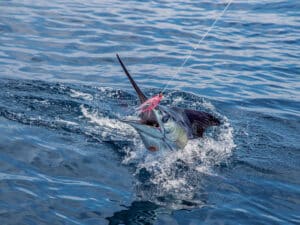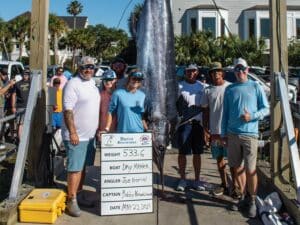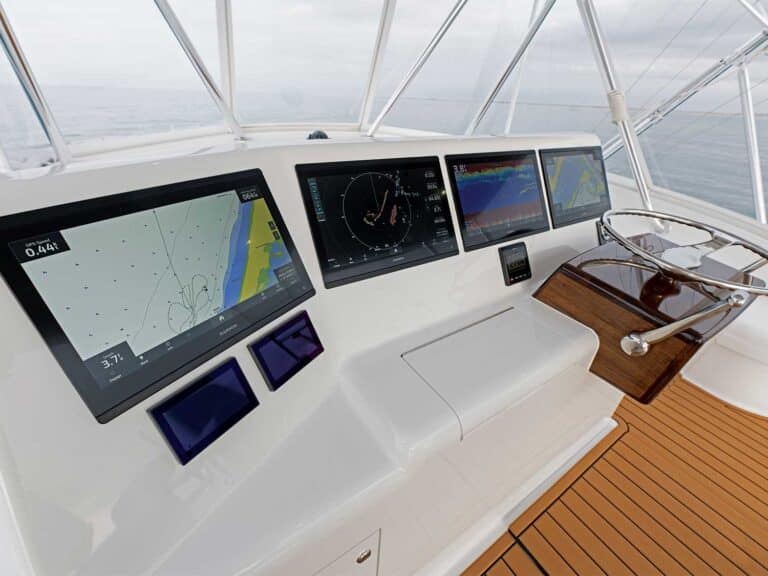
At Marlin Expeditions, formerly known as Marlin University, we strive to shorten the immense learning curve associated with the sport of big-game fishing. Although a lot of folks think of fishing as nothing more than a hobby, those serious about bluewater fishing spend a lot of precious time and an extraordinary amount of treasure trying to get better at catching billfish and giant tuna in some of the world’s most remote and beautiful locations. Purchasing a multimillion-dollar sport-fisher and traveling the world chasing billfish is a far cry from the place where a lot of us started: sitting on a five-gallon bucket at the inlet waiting for something big to eat our frozen shrimp! We like to say that a trip to Marlin Expeditions can take 10 years off that aforementioned learning curve, and here are five of the lessons we try to teach our students before they get on the plane to head home. I learned most of these tips and tricks from fishing with some of the best skippers in the world — most notably, the legendary Capt. Peter B. Wright.
1. Turn the Boat
This is the big one. At the start of almost every session, I tell people that if they don’t learn anything else, they should learn that the pointy end of the boat goes through the water far better than the back end. Taking the time to clear lines and then slowly backing up toward a blue marlin greyhounding on the horizon is not the way to quickly catch a lot of blue marlin. When any billfish bites, the captain should immediately start making a turn in the direction the fish is moving. If it’s going straightaway, he needs to turn and run as fast as his angler can pick up line — even faster if he can see the line and follow it without fear of running the line over. This does two things: It allows you to keep fishing with the remaining baits and lures running on the outside of the turn, and it keeps you close to the fish. We like to tell everyone that nobody ever caught a doubleheader by reeling in all of the lines after the first bite. As a bonus, once the fish wears itself out on its initial run, if you’ve turned and chased the fish down, your angler can now increase the drag on an exhausted fish and roll it over. The faster you catch a fish, the better it is for the health of the fish, the angler’s health and the boat’s chances of running over another one quickly to get an additional bite.
2. Live Bait Rules
To be a good marlin fisherman, you need to be good at all three phases of bluewater fishing: trolling lures, pulling dead baits, and knowing when and where to use live baits. Hookup percentages on all three methods vary from crew to crew, but for the most part: You get the worst hookup ratios pulling lures; in the middle is dead baits; and you get best hookups using live baits. Again, different crews who specialize in each or all of these methods might get different results, but overall, the guys using live baits with the proper rigging and in the right locations are going to whip the guys trolling lures.
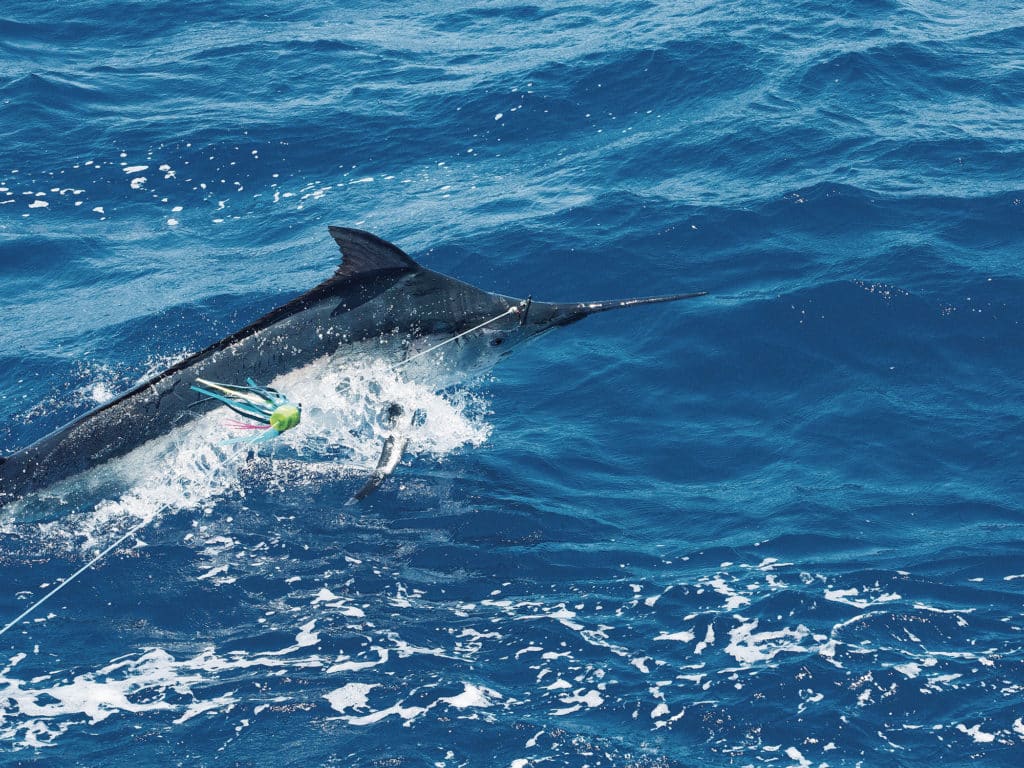
If you don’t know where the fish are and you need to explore, then you need to troll lures at 8 knots to cover ground and find the hot spots. Once you find a place that looks promising, you should slow down and put out your dead baits to work the area. If you find a piece of structure that is holding tuna or bait, like an oil rig, FAD or seamount, and you’re marking big fish down below on the sounder, then you need to catch one of those baits, rig it up and drop it back over — quickly!
3. All Lures Are Equal
I’m sure this next statement is going to irk a lot of lure makers and dedicated lure pullers all over the world, but as Capt. Skip Smith so eloquently put it a couple of decades ago: All lures are created equal at 8 knots. Marlin aren’t incredibly intelligent animals. They have never seen anything small enough to eat moving through the water that they weren’t able to devour. The fact that they will swim right past a dead mackerel bait to pile on a piece of hard plastic should be enough to convince you of that, but many fishermen think pulling a favorite color in a precise location gives you some special advantage. Lures, first and foremost, have to catch a fisherman before they catch a blue marlin. If everyone is pulling at least one blue-and-white Ilander or a Mold Craft Wide Range (which you should be, by the way) in his spread, then guess what: Those lures are going to catch a lot of fish. Driving over a hungry one is far more important than what you are pulling behind you. I saw six out of 10 marlin come up on a homemade teaser behind Capt. Luke Fallon’s Kekoa that consisted of a mudflap with a white plastic Hays lure head attached to the front. No marlin, blue or black, had ever seen such an abomination swimming in the ocean, yet they could not keep away from it.
More: How to Book an Educational Fishing Trip with Marlin Expeditions
4. The Art of the Drop-Back
Being able to use a lever-drag reel with dexterity and precision puts any angler who masters that talent light-years above his competition. At the majority of Marlin Expedition sessions, this is the one skill that we try to teach every angler. If you can’t feed a raging billfish a ballyhoo or live bait in free-spool and hook the fish without getting a backlash, then you are going to suffer disappointment in most of the world’s billfish hot spots.
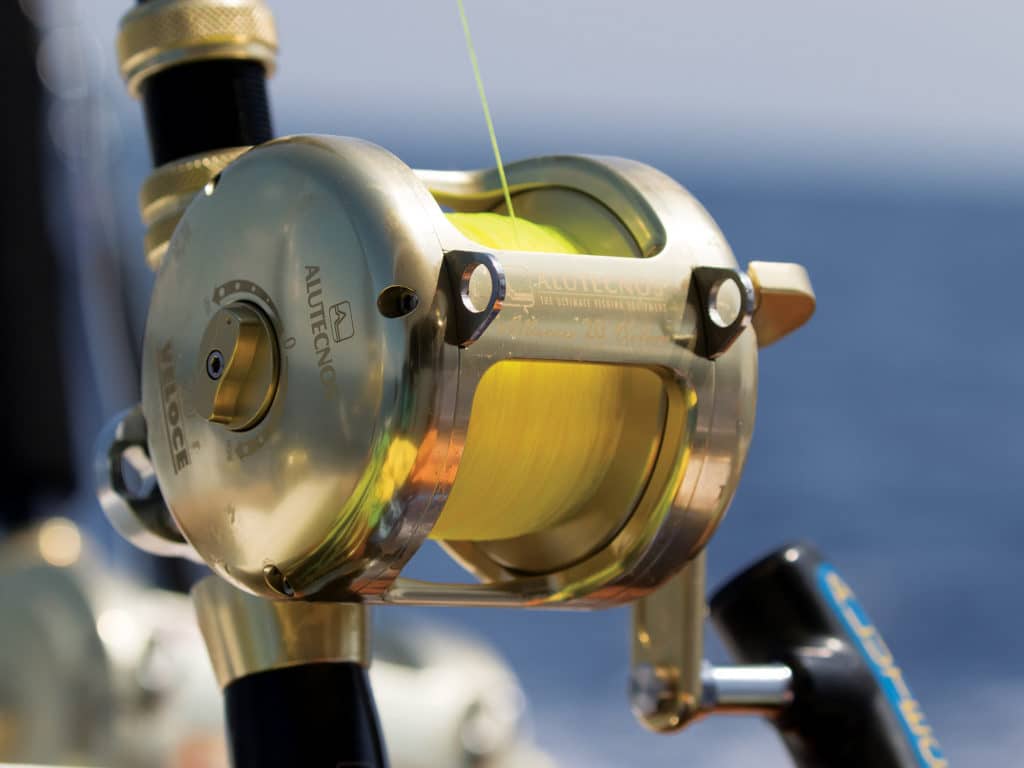
Not only is this method deadly effective, it also gets the angler in the game, putting the onus on his skills with the rod and reel rather than just winding tight on a lure strike and hoping the hook will stick. Plus, there’s nothing more exciting than watching a billfish eat your bait 10 or 15 feet from your rod tip.
5. Drag Kills
While especially important when catching big fish, the proper application of drag at the right moment goes a long way in shortening fight times for all species. In short: Drag kills. We get a lot of blowback from some crews when we try to get them to increase the drag, especially when using stand-up tackle. The crew reasons that applying more drag will make the fish go down and fight harder — and this can happen. But if the angler is set up properly in a chair or a good fighting harness, the best way to catch any fish quickly is to use the maximum amount of drag the angler and tackle can stand when the fish has become exhausted. Again, I learned this in Australia when we had a skinny little Italian guy in the chair holding 60 pounds of drag on a 130-pound outfit with a smile on his face and a 900-pound black on the string. He looked up at me and asked, “Can I put more drag on the fish?” The fish was settled down and fairly close to the boat, so I said, “Hell yeah!” He pushed it up to 80 pounds, and the fish rolled over in about five minutes. If you are pulling lures on 80-wides in the Gulf of Mexico and never push the drag above the strike button, then you might as well be using 50s.

